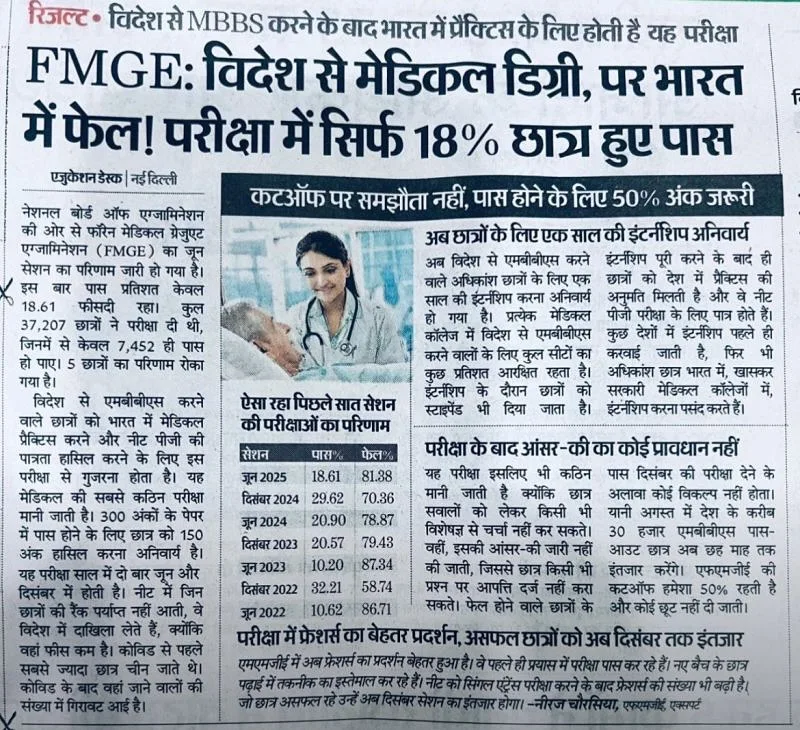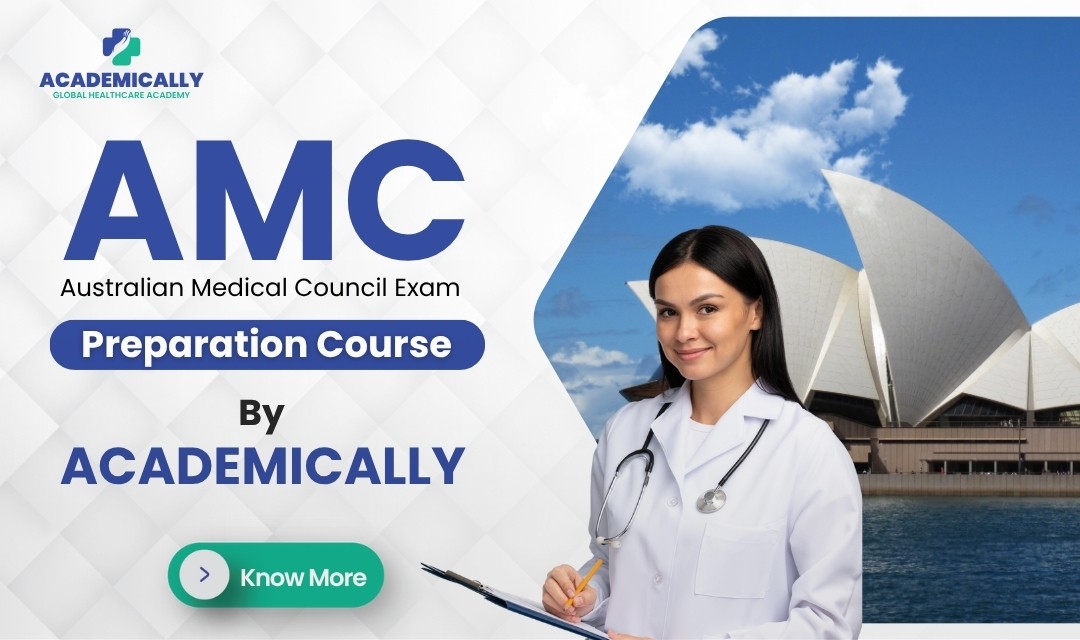Did you know that in FMGE June 2025, only 18.6% of Indian doctors passed the exam? This exam is required for MBBS graduates who studied abroad to practice in India. But the pass rate is low. The pressure is high. For many, it’s a stressful and uncertain path.

This is why over the past few years, more Indian doctors have started looking at international alternatives. For them and many around the world, Australia is emerging as a top choice.
In this blog, we’ll see why Australia is becoming the preferred destination, how it compares to FMGE, the correct visa pathways, and a step-by-step roadmap for Indian doctors.
The FMGE Challenge: Low Pass Rates and Stress
FMGE is notorious for its low success rates. Here’s the latest data:
| Exam | Year | Pass Rate |
| FMGE | June 2023 | 10.20% |
| FMGE | December 2023 | 20.57% |
| FMGE | June 2024 | 20.89% |
| FMGE | December 2024 | 29.62% |
| FMGE | June 2025 | 18.61% |
What this means:
- Many candidates require multiple attempts, wasting valuable time.
- The exam creates high stress and uncertainty about career plans.
- Limited postgraduate (PG) opportunities in India further increase competition.
It’s no wonder Indian doctors are exploring alternatives like Australia, where pathways are structured, and success depends on preparation, not luck.
Australia vs FMGE: Understanding the Exams
The Australian Medical Council (AMC) manages licensing for international medical graduates (IMGs). There are three main pathways depending on your qualifications:
- Standard Pathway: For many IMGs who have done their studies in India, Pakistan, Sri Lanka, etc; involves AMC exams and supervised practice.
- Competent Authority Pathway: For doctors from countries with comparable healthcare systems (UK, USA, Canada); a streamlined pathway.
- Specialist Pathway: For IMGs with recognized specialist qualifications; requires assessment by the relevant medical college.
AMC Exams
- AMC Part 1 (MCQ Exam): Tests theoretical knowledge; 51% pass rate in 2023–24.
- AMC Part 2 (Clinical Exam): Tests practical and clinical skills; 24% pass rate in 2023–24.
| Feature | FMGE | AMC (Australia) |
| Pass Rate | 18–30% | Part 1: 51%, Part 2: 24% |
| Exam Type | Written only | Written + Clinical |
| Preparation Support | Limited | Structured courses and materials |
| Career Path | PG options limited | Supervised practice, fellowship, PG training abroad |
Visa Pathways for Indian Doctors
To work legally in Australia, IMGs must combine medical registration with the right visa. Here’s the accurate picture:
1. Temporary Work (Skilled) Visa (Subclass 482)
- Allows IMGs to work for an approved sponsor in Australia.
- Duration: Up to 4 years depending on the occupation and employer.
- Pathway to permanent residency via employer nomination.
2. Skilled Work Regional (Provisional) Visa (Subclass 491)
- For doctors willing to work in regional Australia.
- Points-tested; requires nomination by a state/territory or eligible family member.
- Helps fulfill supervised practice requirements in regional areas.
3. Employer Nomination Scheme (ENS) Visa (Subclass 186)
- Permanent residency visa for skilled workers nominated by their employer.
- Requires positive skills assessment and prior work experience.
- Provides long-term career stability and pathway to permanent residency.
Career Growth and Lifestyle
Australia isn’t just about passing exams, it’s about building a sustainable, high-reward career.
| Feature | India | Australia |
| Average Salary | ₹10–15 LPA | AUD 90K–150K (~₹50–85 LPA) |
| Career Growth | Limited PG seats | High; fellowships, supervised practice, specialization |
| Work Environment | Standard hospitals | Multi-cultural, advanced hospitals |
| Lifestyle | Heavy workloads | Balanced, quality of life, international exposure |
| PR Opportunity | None through FMGE | Potential pathway after work experience |
Other benefits include:
- Exposure to advanced healthcare technology and best practices
- Opportunities for specialization in high-demand fields
- Work-life balance and better lifestyle quality
- Clearer roadmap toward permanent residency
Step-by-Step Pathway for Indian Doctors
Here’s how Indian doctors can pursue a medical career in Australia:
- Verify MBBS degree with the Australian Medical Council (AMC).
- AMC Part 1: Multiple-choice written exam to assess theoretical knowledge.
- AMC Part 2 / Clinical Exam: Evaluates practical and clinical skills.
- Supervised Practice / Residency: Work under supervision in hospitals or clinics.
- Apply for an appropriate visa (Subclass 482, 491, or 186) to live and work legally.
- Full Registration: Obtain license to practice independently and explore fellowships or specialization.
Tips for Success
- Enroll in AMC preparation course and mock exams.
- Gain clinical experience in hospitals before the AMC Part 2 exam.
- Connect with Indian doctors already practicing in Australia to understand challenges and opportunities.
- Stay updated on visa rules, AMC guidelines, and medical board updates.

Final Thoughts
Choosing what to do after MBBS is a big decision. But if you have done MBBS from another country and want to practice in India, it’s a huge decision and more than that passing FGME is a huge task. FMGE may seem quicker but comes with low pass rates, high stress, and limited PG options. Australia offers a better pathway, making it a smart and achievable path for Indian doctors.
With proper preparation and guidance, practicing medicine in Australia is not just a dream, it’s a reality waiting for you. Are you ready to land your medical career in Australia? Book a free consultation with our expert advisors today and start your journey toward international medical practice.




